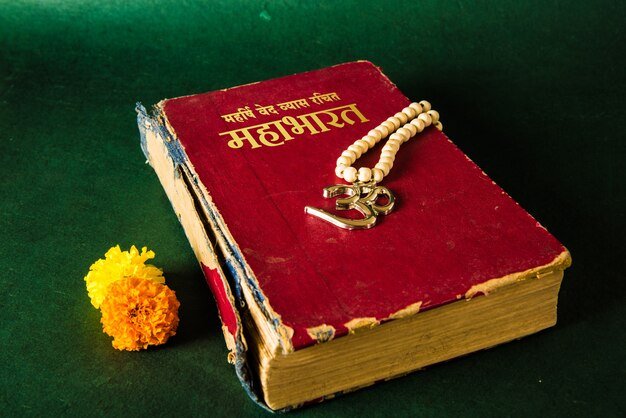The Monte Cristo book stands as one of the most iconic works in literary history. Written by Alexandre Dumas, The Count of Monte Cristo has captivated generations of readers with its intricate plot, unforgettable characters, and exploration of themes like revenge, betrayal, and redemption. Whether you’re an avid fan of classic literature or someone new to the story, the Monte Cristo book offers something for everyone. In this article, we’ll delve deep into the novel’s historical significance, plot, characters, themes, and why it remains relevant today.
A Brief Overview of the Monte Cristo Book
The Count of Monte Cristo, first published in 1844, is one of the greatest literary works by Alexandre Dumas. Set during the early 19th century, it chronicles the life of Edmond Dantès, a young and promising sailor who is wrongfully imprisoned for a crime he did not commit. The novel explores his journey of revenge, personal growth, and ultimate redemption as he seeks justice for the wrongs done to him.
The Monte Cristo book is often considered a novel of betrayal and transformation. It intricately weaves the themes of revenge and forgiveness, with Dantès using his newfound wealth and power to exact retribution on those who wronged him, while also struggling with the moral implications of his quest for vengeance.
Plot Summary of The Monte Cristo Book
Edmond Dantès, the novel’s protagonist, begins as a young, naive man with a promising future. Engaged to the beautiful Mercedes, he is about to become the captain of his ship and achieve his dreams. However, Dantès is betrayed by four men who envy his success: Fernand Mondego, who desires Mercedes for himself; Danglars, who covets Dantès’ position; Villefort, a prosecutor who seeks to protect his own ambitions; and Caderousse, who is simply driven by greed.
As a result of these betrayals, Dantès is falsely accused of being a Bonapartist agent and is imprisoned in the Château d’If, a notorious fortress off the coast of Marseille. In prison, he meets Abbé Faria, a fellow prisoner who becomes his mentor. Faria reveals to Dantès the location of a hidden treasure on the island of Monte Cristo, a discovery that will change the course of his life.
After Abbé Faria’s death, Dantès escapes from prison, retrieves the treasure, and assumes the identity of the wealthy and powerful Count of Monte Cristo. With his newfound fortune, he embarks on a journey to exact revenge on those who betrayed him. However, as his plan unfolds, Dantès begins to question the true cost of revenge and whether his pursuit of justice will lead to his redemption or destruction.
Key Characters in the Monte Cristo Book
- Edmond Dantès (Count of Monte Cristo)
The protagonist, a man wrongfully imprisoned who seeks revenge on those who betrayed him. As the Count of Monte Cristo, he possesses vast wealth and power, using these resources to manipulate the lives of those who wronged him. - Mercedes
Dantès’ former fiancée, who marries Fernand Mondego after Dantès’ imprisonment. She remains a symbol of Dantès’ lost love and innocence. - Fernand Mondego
Dantès’ rival and one of the primary antagonists, who betrays Dantès out of jealousy for his engagement to Mercedes. He later becomes a wealthy and powerful man. - Danglars
The man who envies Dantès’ position as captain of the ship. Danglars plays a significant role in Dantès‘ imprisonment and later becomes a wealthy banker. - Gérard de Villefort
The ambitious prosecutor who seeks to protect his career and reputation by accusing Dantès of treason. His character is marked by cold logic and ruthlessness. - Caderousse
A greedy and selfish man who also contributes to Dantès’ imprisonment. He remains a secondary character but plays a crucial role in Dantès’ quest for revenge. - Abbé Faria
A learned and wise prisoner who educates Dantès while in prison and reveals the location of the treasure that will eventually lead to his transformation into the Count of Monte Cristo.
Major Themes in the Monte Cristo Book
Revenge
At its core, the Monte Cristo book is a tale of revenge. Dantès’ transformation from a naive young man to a calculating and vengeful figure explores the destructive power of seeking vengeance. While revenge initially provides Dantès with a sense of justice, it gradually becomes clear that it comes at a heavy personal cost.
Forgiveness
While revenge is a central theme, the novel also emphasizes the importance of forgiveness. Dantès’ quest for revenge is contrasted with the lives of those who are innocent, particularly the character of Haydée, who teaches him the value of mercy and forgiveness.
Justice
Dumas examines the concept of justice throughout the novel. Dantès’ imprisonment is an unjust act, and his quest for revenge serves as a form of self-administered justice. However, the novel raises questions about whether true justice can be achieved through vengeance or if it requires reconciliation and forgiveness.
Redemption
As the story progresses, Dantès realizes that revenge alone cannot bring him peace. The novel explores the idea of redemption, not only for Dantès but also for the other characters who experience personal transformations throughout the book.
Betrayal
Betrayal is another key theme in The Monte Cristo book. Dantès is betrayed by his closest friends, and the novel portrays the profound emotional and psychological damage caused by such treachery. The impact of betrayal is felt throughout the book, as Dantès seeks to right the wrongs done to him.
Why The Monte Cristo Book is Still Relevant Today
Although The Count of Monte Cristo was published over 170 years ago, its themes of revenge, betrayal, justice, and redemption remain relevant today. The novel delves deep into human nature, exploring the darker side of ambition, envy, and pride, but also offering hope for redemption and forgiveness.
In today’s world, where personal betrayals and injustices still occur, readers find the novel’s exploration of revenge and justice compelling. Moreover, the complexity of the characters, particularly Dantès’ internal struggle, resonates with contemporary readers who grapple with moral dilemmas and personal growth.
The Monte Cristo book continues to inspire countless adaptations, including films, television series, and plays. Its timeless narrative structure and universal themes have made it a staple of world literature.
The Monte Cristo Book vs. Other Classic Revenge Novels
To appreciate the uniqueness of The Count of Monte Cristo, let’s compare it with a few other famous revenge-themed novels.
| Feature | The Count of Monte Cristo | Moby Dick | The Seekers |
| Protagonist | Edmond Dantès (Count of Monte Cristo) | Captain Ahab | Various characters (multi-perspective) |
| Type of Revenge | Calculated and strategic revenge | Obsessive and self-destructive vengeance | A quest for truth and justice over revenge |
| Tone | Intricate, tense, emotionally charged | Dark, philosophical, tragic | Inspirational, yet intense |
| Narrative Structure | Linear, with deep character development | Fragmented and allegorical | Traditional narrative with a focus on family |
| Moral Outcome | Redemption through forgiveness | Tragic end, Ahab’s obsession consumes him | Pursuit of justice, often bittersweet |
| Historical Setting | Early 19th-century France | 19th-century American whaling industry | 20th-century America (post-war) |
As shown in the chart, while each novel shares a revenge-driven narrative, the method and tone differ greatly. The Count of Monte Cristo is more about a carefully executed, almost methodical revenge that intertwines with themes of personal growth and redemption. In contrast, Moby Dick focuses more on the obsessive pursuit of vengeance at the cost of one’s sanity, and The Seekers takes a more collective approach to justice rather than a singular act of vengeance.
Conclusion: Why You Should Read the Monte Cristo Book
The Monte Cristo book is not just a story of revenge, but a reflection on the complexities of human nature. Alexandre Dumas’ masterpiece has stood the test of time due to its rich characters, intricate plot, and profound moral questions. Through the transformation of Edmond Dantès, the novel explores how deep emotional wounds can drive individuals to extremes, while also offering a path toward redemption.
If you’ve never read The Count of Monte Cristo, or if it’s been a while since you’ve revisited this classic, now is the perfect time to dive into this epic tale. Whether you are drawn to the themes of vengeance, justice, or personal transformation, this book will undoubtedly leave a lasting impact.
Embrace the Monte Cristo book today, and immerse yourself in one of the greatest stories ever told.

